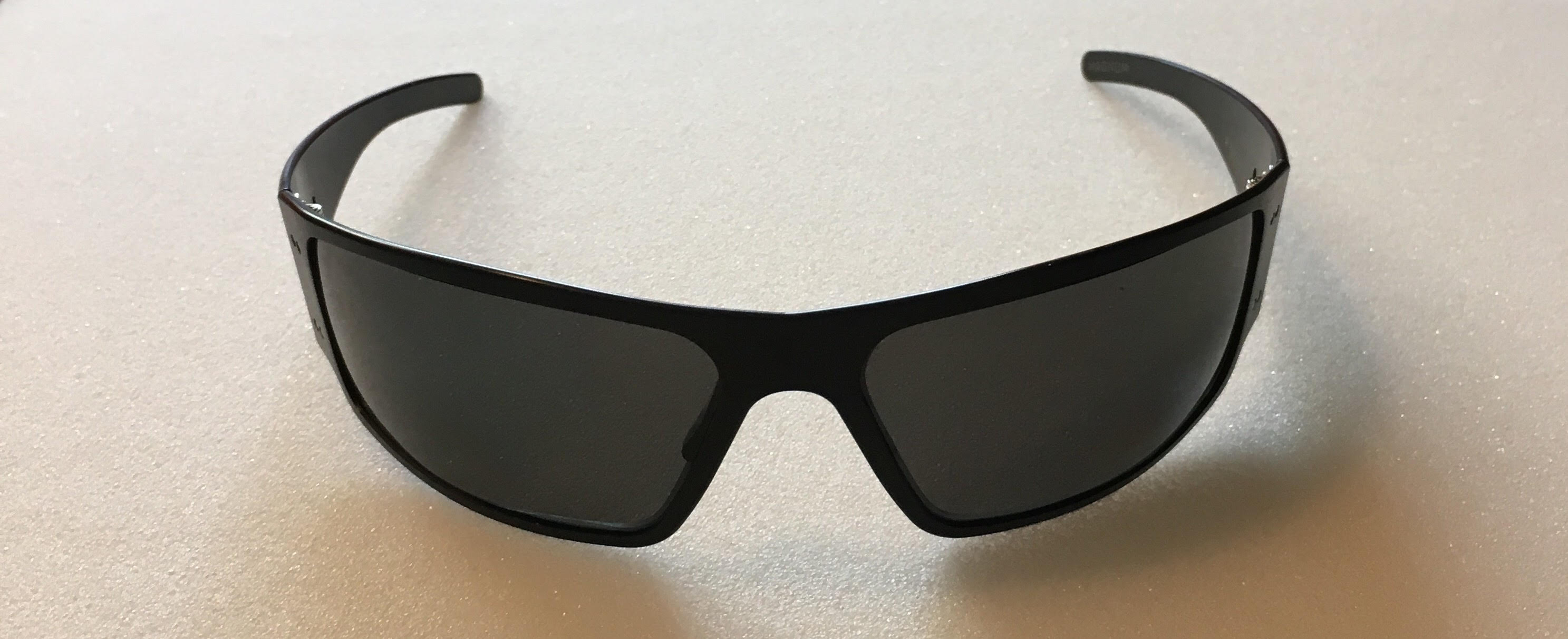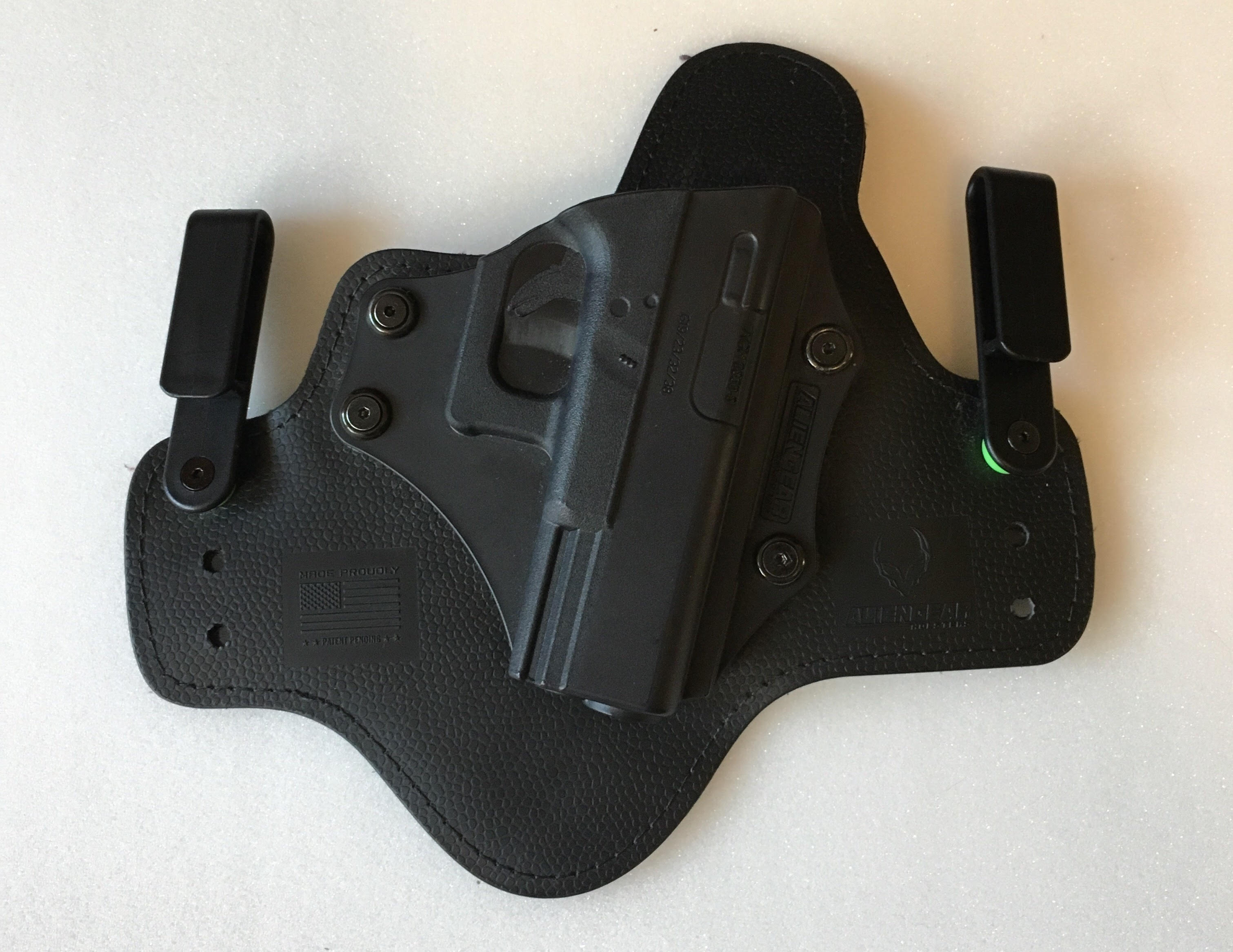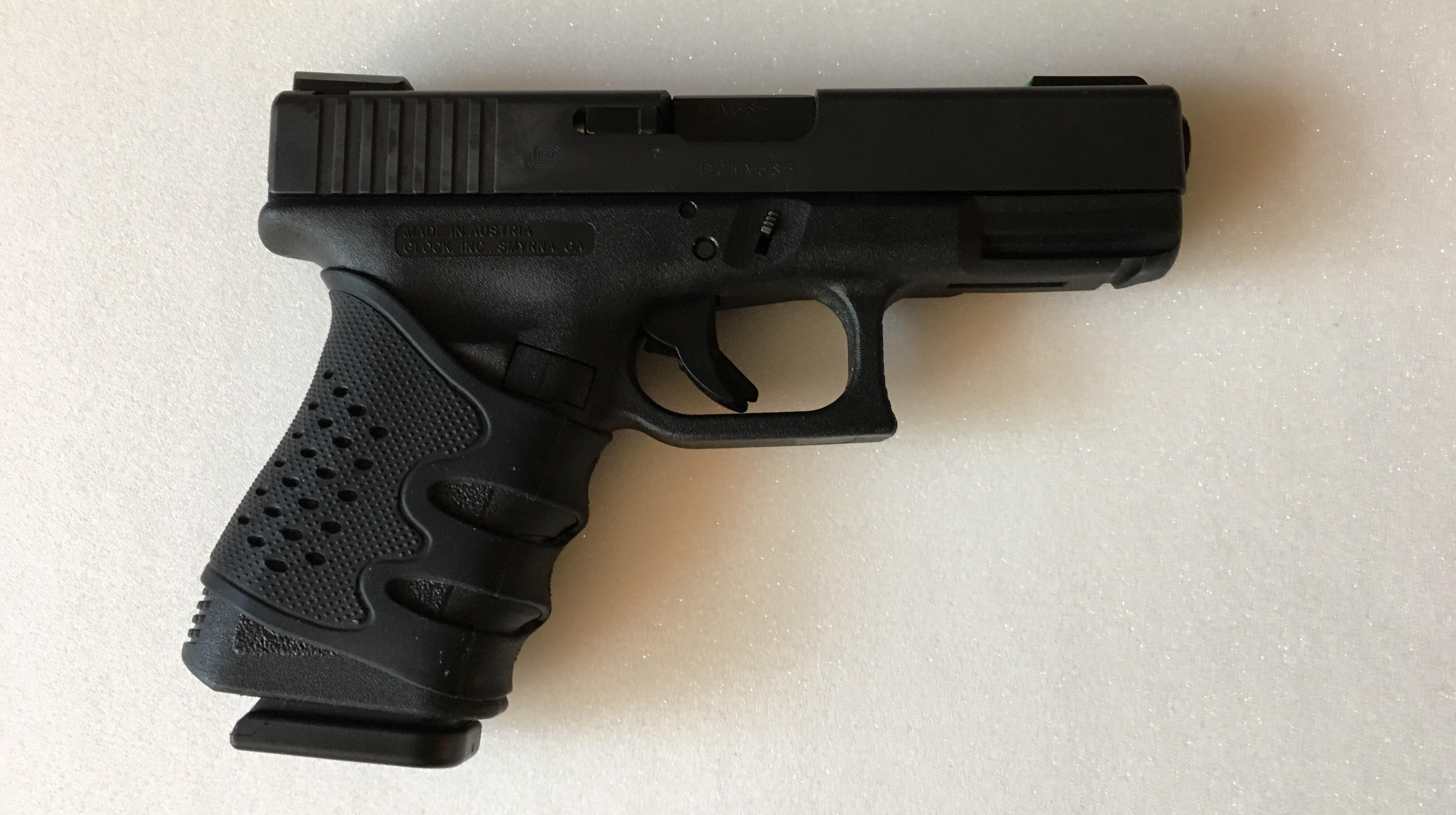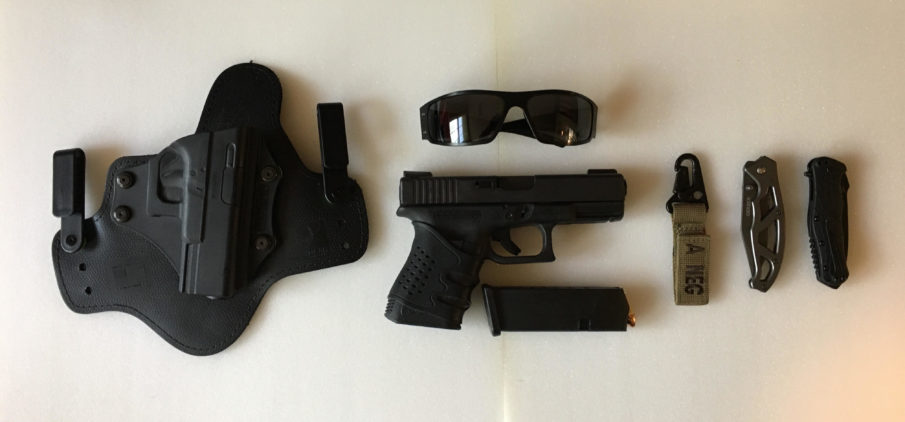When it comes to choosing the stuff you keep strapped to you on a daily basis, there are a number of things you need to take into account: the environments you’re normally in, the laws in your particular state and county, weight, mobility, and perhaps most important of all – comfort. It may sound awfully soft of me to suggest comfort matters when it comes to survival, but let’s be honest with ourselves – if what you’re wearing isn’t comfortable, it’ll eventually end up in the glove box of your car or the drawer of your desk instead of where it belongs: on your person.
I can’t tell you for sure just how heavy my EDC gear is, but it isn’t bad. I’d argue I lost more weight by switching from beer to vodka than I put back on each morning with this stuff – and that’s important. Not only does weighing yourself down make you uncomfortable, but if you’re like me and you load all of your daily carry onto your belt, it also poses a problem when it comes to keeping your weapon concealed. As many of us who carry on a daily basis can attest, a heavy firearm pulling your pants down on one side often forces you to readjust your belt and pants to walk comfortably – and one of the first things you’re taught when carrying concealed for security purposes is not to fiddle with your firearm. Every adjustment you make to your waistband holster will advertise the presence of your weapon to anyone with a keen eye for trouble – which isn’t the type of attention you want to draw to yourself.
The first thing you may have noticed in the picture above is the fact that I carry not one, but two knives. That isn’t because I love knives (though I do) – it’s actually a product of years of martial arts training. There are lots of different mindsets when it comes to martial arts, but regardless of discipline, I’ve always sought instructors that maintain a combat mindset in the execution of techniques. I’m not training to win a tournament, although I’m happy if and when I do, I’m training to win a fight I don’t want to be in. When you climb into a cage or ring, there are rules in place to keep you safe. If I find myself drawing a knife in a parking lot, there aren’t. I’m not even thinking about escalation of force – I’m only concerned with neutralizing a threat.

That’s where carrying two knives comes in. One is for the stuff you carry a knife for: opening boxes, carving your girlfriend’s name into a tree, or occasionally cursing yourself for leaving your Leatherman at home and reluctantly pretending it’s a flat head screw driver. The other is to hurt people.
My Gerber Paraframe knife is currently filling the role of all-purpose abuse taker. As you may have noticed in the picture, the blade looks like it’s seen some action, but I’m happy to report that it holds a great edge even after multiple times at the sharpener. The Kershaw 1987 RJ Tactical Knife, on the other hand, never comes out of my pocket for daily cutting tasks. Keeping these tasks separate is important to ensure my fighting knife is as sharp as possible if I ever feel the need to draw it, and mentally it speaks to the respect I pay to the knife I trust with my life. Both of these knives are available at your local retailer for around $30 bucks a piece, but I got both for a whole lot less than MSRP from the Crate Club.

To keep my eyes protected from the sun (and the possibility of spent shell casings) I have a pair of Gatorz. The Magnum frames hold tight on my head, so they don’t fall off when I’m looking into the engine bay of my wife’s car or chopping wood, and although they’re a fairly new addition to my loadout, they’ve already held up extremely well to the various abuses I’ve subjected them to here in the Georgia woods. After being dropped on rocks and protecting my eyes from flying woodchips on more than one occasion, the view is still crystal clear. You can get a pair of Blackout Magnums with polarized lenses like these for around $180.
The Keychain that gives my blood type (keys omitted for security) might seem like a novelty, but I take blood pretty seriously. A number of people I know have needed emergency blood transfusions over the years, including my brother, and as anyone who’s been through such an experience can attest, there’s never been a person in need of a blood transfusion that wasn’t in dire need of that blood. I don’t wear a dog tag on my boot anymore, but I want to make sure there’s no confusion if I’m ever in need of such a supplement.

My EDC concealed carry holster is an Alien Gear Cloak Tuck IWB. While mine isn’t the latest iteration on the market, I honestly couldn’t speak highly enough of the quality and comfort you get for around $40. I have a plate for my Glock and my 1911, meaning I can switch which gun I use this holster for in about five minutes with a single hex key – great for those days I decide to carry something a bit bigger and shinier than usual. This holster has been tucked into my pants everyday for about a year now, and although the edges are starting to show a bit of wear, it works like a charm and feels just as comfortable as those expensive leather ones you can buy for the same price as a nice steak dinner for the whole family.

And finally, as those of you that have been reading my work know, I have my lightly modified Generation 3 Glock 19 that I purchased as an experiment and found myself falling in love with. In order to make it my own version of the best EDC I could, this one has TRUGLO TFO night sights, a heavy tungsten guide rod/spring combination, extended slide lock and magazine release button for easier breakdowns and reloads, a grip cover, and a few aesthetic doo-dads to make it my own. This gun shoots straight, doesn’t weigh much, and continues to impress me with its reliability and feel. I only carry one magazine in the weapon, but I keep two loaded spares in my survival bag.
Of course, an Every Day Carry loadout is subject to change, and mine is no exception. The knives, for instance, often come and go as I come across a new one I’d like to play with or test out, the firearm has switched recently from 1911 to Glock 19, and so forth – and that’s how your EDC should go as well. Try different gear and combinations until you find what works best for you and your situation. I don’t work in a cubicle and I live in the woods, which means I have different needs than an HR guy that lives in Boston (which is something I tried being for about six months once… it was awful).
Whatever you end up choosing, though, should be based on necessity, usefulness, and comfort, because don’t forget; your carry-gear is only good when you actually carry it.










COMMENTS
You must become a subscriber or login to view or post comments on this article.